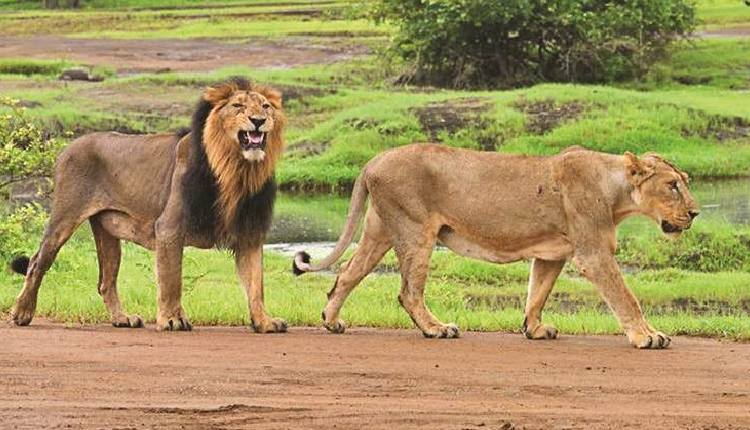Gandhinagar: The upcoming lion census in Gujarat will use Artificial Intelligence (AI) to count the majestic Asiatic lions, heralding a new era of technological integration in wildlife conservation.
The exercise, led by the Gujarat Forest Department, will be held from May 10 to 13, spanning 11 districts including the iconic Gir National Park, home to the world’s only population of wild Asiatic lions.
Forest Minister Mulu Bera announced the initiative on Wednesday, calling it a significant step forward.
“The lion census will take place not just in Gir, but across all areas where lions are known to roam. Our staff, along with NGOs and dedicated volunteers, will work round the clock in two 24-hour phases. Artificial Intelligence and other technologies will be used for better accuracy and efficiency,” he said.
The AI-based approach is expected to streamline the traditionally manual process, which involved physically spotting lions, recording details, and mapping their movements using GPS and photographs.
Now, with AI-driven data analysis, image recognition, and real-time tracking systems, the census aims to deliver faster, more reliable population estimates.
Once on the brink of extinction, the Asiatic lion (Panthera leo persica) has made a remarkable recovery thanks to decades of conservation efforts — most notably in Gir, the species’ last natural habitat.
The last official census in 2020, conducted through the Poonam Avlokan method, recorded 674 lions, a 29 per cent increase from the previous 2015 count of 523 lions. The lions are not just Gujarat’s pride but a global symbol of successful conservation.
Today, their range extends beyond Gir into parts of Amreli, Junagadh, Bhavnagar, Botad, Porbandar, Rajkot, Jamnagar, and Surendranagar districts.
Officials confirm that lions have adapted to new landscapes, including coastal regions and revenue areas outside protected forests, raising both excitement and concerns about human-wildlife interaction.
This year’s census holds particular significance. While the exercise is usually held every five years, the pandemic disrupted the 2020 full-scale count. Instead, the numbers released that year were based on a modified estimation method.
As such, the 2024 census will be the first comprehensive lion count in nearly a decade, providing much-needed insights into population growth, migration trends, and habitat pressure.
Wildlife experts emphasise that AI tools will not only aid in identifying individual lions through facial and stripe-pattern recognition but will also help assess their health, movement patterns, and possible conflict zones.
“Integrating AI into the census could be a game-changer. It can process thousands of camera trap images quickly, flag anomalies, and reduce human error,” said a senior forest official based in Junagadh.
The Gujarat government has consistently invested in lion conservation, including habitat expansion, prey base enrichment, and veterinary care. Additionally, new lion rescue and interpretation centres have been established in places like Jasadhar and Devaliya.
The involvement of local communities, who often coexist with the lions, remains vital. Many Maldhari families, who graze livestock in and around the Gir forest, have played a crucial role in protecting the big cats.
Volunteers and NGOs are also expected to play a vital role in this year’s census. Their participation not only aids the state in data collection but also fosters awareness and conservation-centric tourism.
The Forest Department’s decision to adopt AI comes amid growing concerns around habitat saturation, lion dispersal into human settlements, and disease vulnerability, such as the canine distemper virus that affected Gir’s lion population in 2018. Experts stress the need for real-time data to plan corridor connectivity and health monitoring.
(IANS)
















